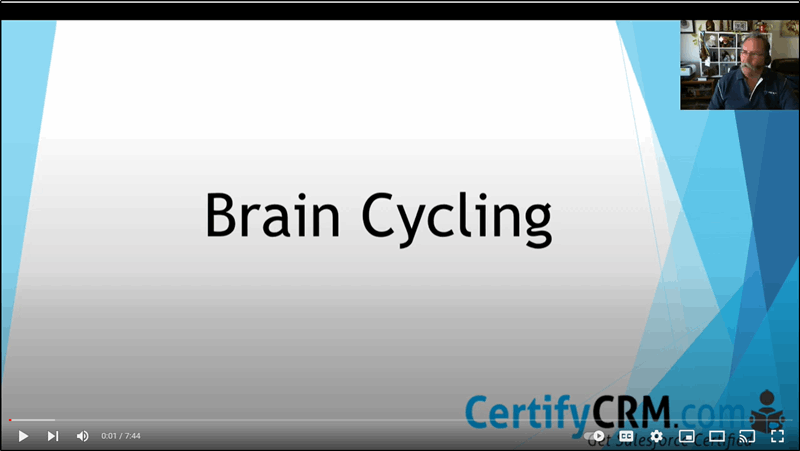Memory Hacks
These techniques (memory hacks) will help you remember those critical facts needed for exams.
These are great techniques that you can use when you need to remember lots of facts and figures.
Want to watch the video instead: https://www.youtube.com/watch?v=JqTW2n5TzgU
When you think of Brain Cycling – is this what you see?

Our brain (like a computer) has both short-term and long-term memory.
In order to remember something for the future, we need to push it into our long-term memory. Once it’s there it’s easy to retrieve and hard to forget. But it can be hard to get it to stick in long-term memory.
The trick is what I call “Brain Cycling” – forcing that fact around and around our brain until it finally sticks.
When you see this logo, do you think of recycling?

You have seen this logo so many times that just the image without words reminds you about recycling. It’s on every drink can, bottle, and package and is a reminder that we need to consider the environment when disposing of this package.
So, you see we can use just an image to recall important information.
What about ROYGBIV – is this familiar to you? It is called a mnemonic, a technique where a word is comprised of the first letter of other words and helps you to remember those words in sequence.

ROYGBIV – Red, Orange, Yellow, Green, Blue, Indigo, Violet – the colors of the rainbow.
Going back to images for a minute, to show how powerful the brain can be at remembering – if you were shown a photograph of one of your parents in their teenage years – your brain can still recognize them, even though you may have never seen that particular photograph before and it may have been taken 20-30 years ago (or longer).
Handwrite those exam study notes!
Studies have proven that the writing of notes by hand requires a different type of cognitive processing than typing notes on a keyboard, leading to better memory retention.
New research by Pam Mueller and Daniel Oppenheimer demonstrates that students who write out their notes on paper actually learn more.
… those who wrote out their notes by hand had a stronger conceptual understanding and were more successful in applying and integrating the material than those who took notes with their laptops.
https://www.scientificamerican.com/article/a-learning-secret-don-t-take-notes-with-a-laptop/
The study found that when typing notes during a lecture, students took more notes and tended to write word-for-word what their professor said, without analyzing the content. In contrast, when taking hand-written notes, students were slower and had to listen, digest and summarize the information.
Our brain has two types of memory, just like a computer – short-term memory and long-term memory. What we need when studying for exams is to move those important concepts and facts from our short-term memory to long-term memory. One way we can do this is by repetition.
For those that are old enough to remember “rote learning” in school, this is a tried and proven method of remembering facts and figures – by repeating them over and over again until they are etched in our memory (moved to long-term memory).
My tips that endorse this method and the research are more complex than simple rote learning but the same underlying principle applies – repeat the information over and over again. We do it in a slightly different way as follows:
Handwrite your notes
When handwriting notes, you listen or read the content, summarise it, and write it in a format that you are familiar with using your own words. During this process, the information cycles through your brain at least three times. Once to listen or read, again to analyze/summarise the information and write it down, and a third time to read back what you have written to ensure it makes sense. This cycling through the brain several times is what helps move the information from your short-term memory to long-term memory.
Read your notes aloud
Reading what you have written aloud not only cycles the information through the brain another couple of times but also helps give another perspective on the written material. Hearing it read aloud seems to make it different in some way from reading it silently to yourself. It’s almost as if you need to perform some extra cognitive processing because the information is now being broadcast and others may hear it.
It may also be a great opportunity to record the material you are reading aloud so you can replay it later.
Make flashcards
Making flashcards from your handwritten notes is another good summarizing technique that starts those brain cycles over again. Leave it a couple of days after you have written your notes then pick out key facts to create your flashcards.
One-page summary
Creating a one-page summary of your notes is yet another technique that calls for extreme culling of your notes, leaving only the bare facts. Once again you start that brain-cycling process to reinforce and move that important information into long-term memory.
Watch the following video where I give you a bit more explanation of the Brain Cycling technique.



